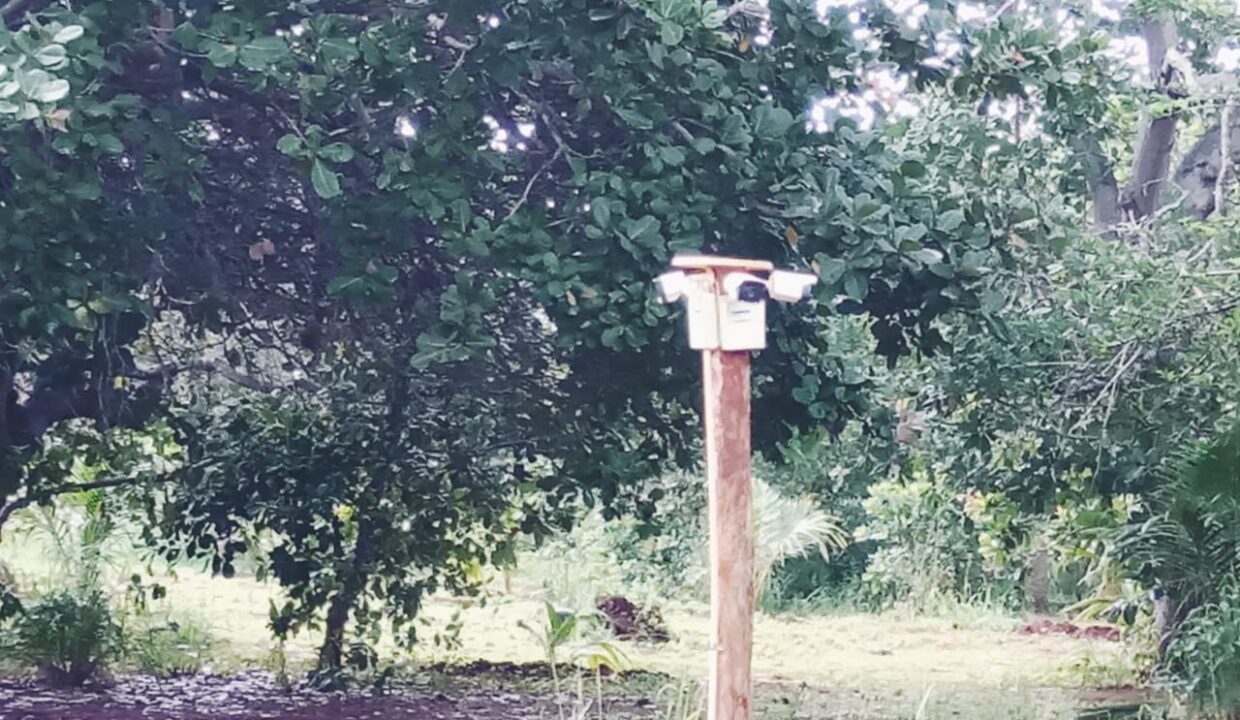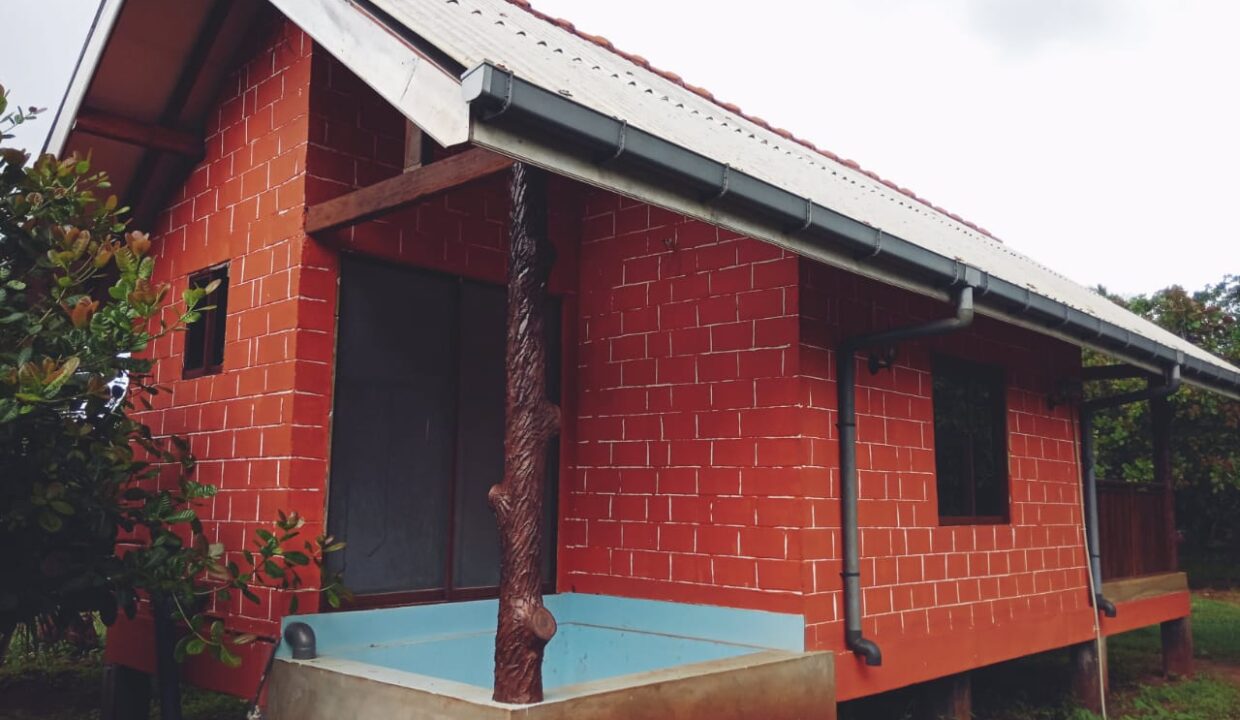Arugam Bay, a 2-acre beachfront land for sale at Whiskey Point: Surfers heaven in Sri Lanka!
Known as one of the best surf beaches in the…
US$200,000
Wanathavilluwa, Puttalam (NW), Sri Lanka
For Sale
US$348,000















Located in the north west region of Sri Lanka, the property is the dreamland for an investor seeking to cultivate on fertile land!
This fully fenced 25-acre land comes with a main bungalow, a governor’s bungalow and an eco-friendly cabana for tourists. Some features they present are 3 bedrooms with an attached bathroom for the main bungalow, 10 beds in the governor’s and a mini pool in the Cabana. The place is fully equipped and surveilled by CCTV cameras all around. This property is also ideal to build up a nature resort as it is close to Wilpattu National Park.
Wilpattu National Park is located 25km north of Puttalam or 30km west of Anuradhapura. The park that lies on the northwest coast spans the border between North Central Province and North Western Province of Sri Lanka. To the south of Wilpattu National Park is River Modergam Aru; to the north is River Kalay oya.
Reaching Wilpattu National Park Colombo-Puttalam A3 highway leads to the city of Puttalama. 42 km along the A12 Puttalama- Anuradhapura highway is a large sign board that reads Willpattu National Park. 7km along the road that turns to the left at the sign board takes you to the entrance of the park at Hunuwilagama.
Wilpattu was declared a wildlife sanctuary on the year 1905. On 25th February 1938, the sanctuary was elevated to the status of National Wildlife Park. On 7th November 1947, the northern area of Wilpattu was declared as Wilpattu North Sanctuary.
Climate and topography
Wilpattu National Park, the largest wildlife sanctuary in Sri Lanka span an area of no less than 131,693 hectares with altitude ranging between the sea-level and 152 meters.
Wilpattu National Park is situated in the dry zone, and is unlike any other wildlife sanctuary in Sri Lanka. A unique complex of over 50 wetlands called “Villu” is the most prominent topographical feature of the national park. ‘Villu’ are shallow natural lakes filled with rainwater surrounded by open grassy plains amidst the dense scrub jungle. The presence of these Villus with an abundance of water can best be explained in the weather patterns that prevail over the park: while the period of drought is only during the months of May to early September, the main rainy season is during September to December with the heavy downpours of north eastern monsoon; inter monsoon season visits the park March and April. Annual temperature in the Park is around 27.2 Celsius and its annual rainfall is approximately 1000 mm.
The best time to visit Wilpattu National Park is during the months of February and October. Wilpattu National Park has a good network of gravel roads, particularly between the water holes.
Vegetation
Wilpattu National Park consists of three types of vegetation: littoral vegetation including salt grass and low scrub immediately adjacent to the beach; a 5-10 km coastal belt of monsoon scrub of very low stature; and further inland, the wooded forest with tall emergents, such as Palu (Manilkara hexandra) and Satin (Chloroxylon swietenia), Milla (Vitex altissima), Weera (Drypetes sepiaria), Ebony (Disopyros ebenum) and Wewarna (Alseodaphne semecapriflolia). Some 73% of the park is dense forest or scrub and the rest is more open habitat.
Wildlife
Wilpattu National Park’s varying natural habitats; coastal belt, natural lakes (villus), rocky outcrops, scrublands, open grasslands and dense forest provide for numerous species of animals. Among the species are 31 mammals. The biggest draws in Wilpattu are Leopards (Panthera pardus kotiya) and Sloth bears (Melursus ursinus). Apart from those two mammals are Asian Elephants (Elephas maximus), Spotted Deer, Barking Deer, jackals, sambhur, barking deer, mouse deer Wild Pig, Water Buffalo (Bubalus bubalis) and Mugger Crocodiles.
Butterflies recorded include the Great Eggfly, Blue Mormon, Common Mormon, Common Rose Great Orange Tip, Glad-eye Bushbrown, Blue Mormon, Common Mormon, Common Rose and Crimson Rose. Countless species of birds can be found and the park plays host to numerous winter migrants from November to March, while menacing crocodiles top the list of reptiles.
Butterflies recorded include the Great Eggfly, Blue Mormon, Common Mormon, Common Rose Great Orange Tip, Glad-eye Bushbrown, Blue Mormon, Common Mormon, Common Rose and Crimson Rose. Also roaming on the grasslands are Star tortoises (Geochelone elegans) at Wilpattu. In the large Villus are Pond turtle (Melanonchelys trijuga) and the Soft shelled turtle (Lissemys punctata)
Accommodation
Wilpattu National Park has no accommodation options within the park as at present. The blueprints are being drawn to rebuild seven dilapidated circuit bungalows at the Wilpattu national park situated in Maradanmaduwa, Pannikar Villu, Kalli Villu, Mena Villu, Thala Villu, Manikkapola Uttu and Kokmottai. Except for the bungalow at Kokmottai, all other bungalows are built overlooking the lovely Villus. Campsites too are planned to be demarcated and equipped for the benefit of wildlife lovers. However, for the time being, Anuradhapura located 30 km away from the park provides the regular accommodation options.
Cultural Heritage
Wilpattu National Park and its surroundings are of history that runs as far as back to the arrival of Prince Vijaya in Lanka from East India in 543 BC. The landing beach of prince Vijaya is believed to be the area today known as Kudriamali. Kali Villu is said to be location of the palace of Kuveni, a princess of a native tribe in the island.
Wirandagoda and Galbendi Niyara located north-east of Maradanmaduwa at Wilpattu are believed to be two of the locations where prince Saliya, who forfeited his right to the crown of Lanka, lived with his low caste wife called Asoka Mala a couple of millenniums ago.
At Pomparippu of Wilpattu, several urns containing human remains have been found. The urns are believed to belong to period prior to the recorded history of Sri Lanka, i. e. prior to the arrival of Prince Vijaya in Lanka. In the eastern part of Wilpattu are remnants of breached tanks left over from agricultural systems of ancient Sinhalese civilizations. Also between Palangaturai and Kollankanatte are the remains of an old harbour.
Jeep Safaris
Jeep Safari is the regular norm in exploring the Wilpattu National Park. While Leopards, Elephants, Sloth bear, Deer, endemic birds can be sighted easily during a half-day safari; of course, the full day safari at National Park affords greater joys with wildlife. During the safari, the tourists aren’t supposed to get off the jeep at the tracks of the wild animals and expose themselves to the possible encounters in the wilderness. With the rangers at the Wilpattu National Park guiding the wildlife safaris, the visitors are always safe though in the thick of wilderness. There are two park gates namely (A) Hunuwilgam Entrance (B) Eluwankulama Entrance
The land is suitable for any sort of cultivation, however used mainly for cashews and coconuts incidentally. In fact, the current income rate stands at:
To reach such yield, fertile wet soil, hose, deepwell, main power is available on site. At Esprit, we recommend this property for any ecofriendly investment. With the running climate, you are assured of an income at every harvest. Check it out! Contact us for more details!
Known as one of the best surf beaches in the…
US$200,000
In the West coast of Sri Lanka, this 35-perch land…
US$110,000